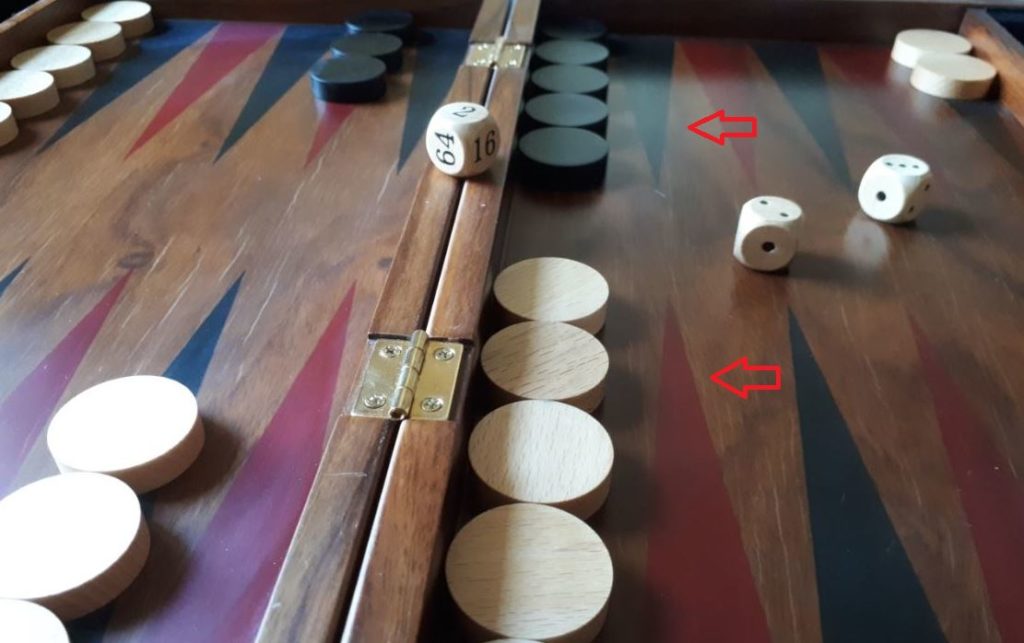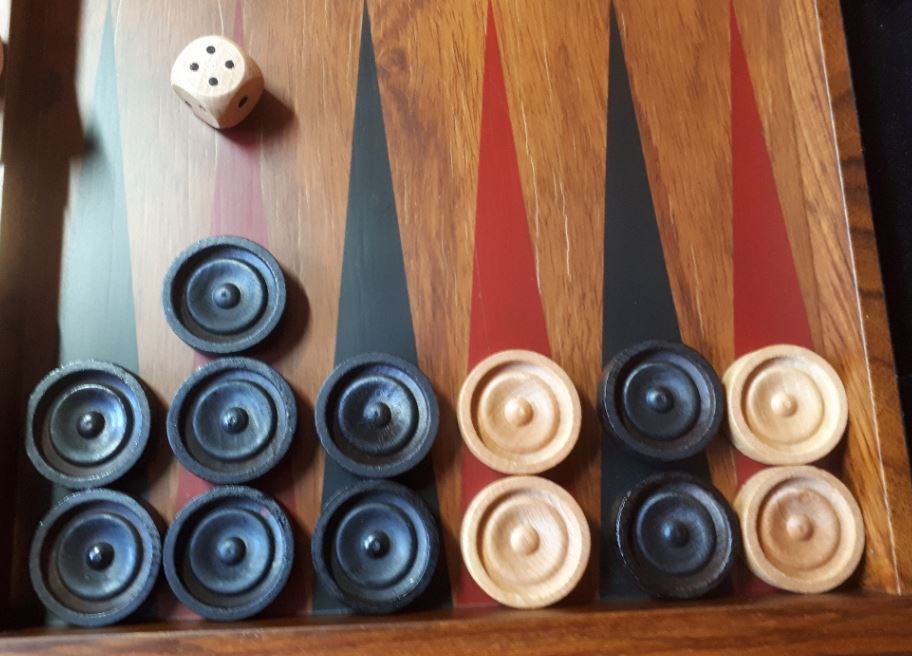Last updated on May 19, 2024
This Deluxe Backgammon post is another in our series for absolute beginners. In this instance, we look at the need for adopting defensive strategies when we fall behind in the race.
Backgammon is an exciting strategy game where the fortunes of the players can change in an instant. A series of low rolls or getting blitzed early in the game can quickly leave one player well behind in the race. This can be particularly intimidating for new players, which could lead to confusion and panic. No one wants to fall a long way behind in the race, but it does happen, as a result, there is a need for defensive measures.
There are several defensive backgammon strategies that can be employed. However, the specific strategy that should be employed will depend on the state of the game. If contact has been broken, defensive strategies are useless and the only option is the running strategy. However, if you are behind, and contact has not been broken, one backgammon strategy you can employ is the holding game.
Holding game strategy
The holding game involves securing a point high in the opponent’s home board, called an anchor. The holding game can be played from the opponent’s bar-point. However, ideally, the anchor should be placed on the opponent’s 5-point. This anchor will serve three purposes. Firstly, it will slow the progress of your opponent across their outer board. This is because the closer they come, the greater the chances of them being attacked by a direct hit (6 or less). This should slow the opponent’s approach and buy more time for you to develop your home board. Secondly, if the anchor is on the 5-point, it gives a safe landing zone should another of your checkers get hit. Thirdly, the anchor reduces your opponent’s chances of constructing a prime.
The holding game requires patience, ultimately you are waiting for a chance to hit your opponent’s and send them to the bar. Whilst, waiting for the opportunity you should be using your rolls to build a prime within your home board. A prime consists of a sequence of connected points that will provide a barrier to re-entry from the bar. The longer the prime, the stronger it becomes.
The ultimate is to build a six-prime within your home board. This will close the board and totally block re-entry from the bar. Once a prime has been constructed you then need to maintain your timing or you can risk losing the prime. Timing refers to whether a player’s position is likely to improve or disintegrate over time. It most commonly refers to being behind in the race when a player would like to maintain a prime without crunching while waiting for an opportunity to hit.
Back game strategy
The other defensive option when a long way behind in the race is the back game strategy. The back game is not a strategy of choice. It is imposed upon players because they have been hit multiple times and are behind in the race. The goal is to secure two or more anchors in your opponent’s home board and wait for an opportunity for a late hit. The perfect number of anchors is two, any more is a waste of material.
During the wait for the opportunity to hit, you need to use your other checkers to develop your home board. However, given you have two anchors, as opposed to just one in a holding game, you have slightly less material to work with to create a prime. The back game strategy should only be used as a last resort. This is because when it fails there is a strong of losing by a gammon or worse.
It is important to understand these key defensive strategies. This is because backgammon contains an element of luck and the dice rolls may fall against you. An experienced player will recognise when luck has gone against them. They know that they will need to adopt a defensive strategy. It is also important when adopting a defensive strategy to not give up. Beginners tend to surrender after getting a couple of low rolls and getting a few checkers on the bar. Then they make rash decisions, which quickly lead to a loss. Patience is definitely required when playing a defensive game. Knowledge of the proper defensive countermeasures will enable you to compete and save a seemingly lost game.
Related content
Backgammon Galore – basic strategies.



Interesting article, I think I play backgammon too aggressively most of the time. I am going to try some of these concepts in my upcoming matches and see if it makes any difference. My preferred backgammon strategy has always been the blitz, but this post suggests I should consider an alternative style of play. Thanks for the backgammon tips.
This is my first time go to see at here and i am genuinely happy to read all the backgammon articles you have. Where is the best place to start?
Hi Lamar, you might like to start with the basics section in our our backgammon playing guides. Then read the post about how to improve your backgammon. Next return to the backgammon playing guides and work through the beginners section followed by the intermediates. Keep in mind you need to apply what you learn to your actual backgammon games. It only take a few minutes to learn backgammon but it takes years to become a good player.